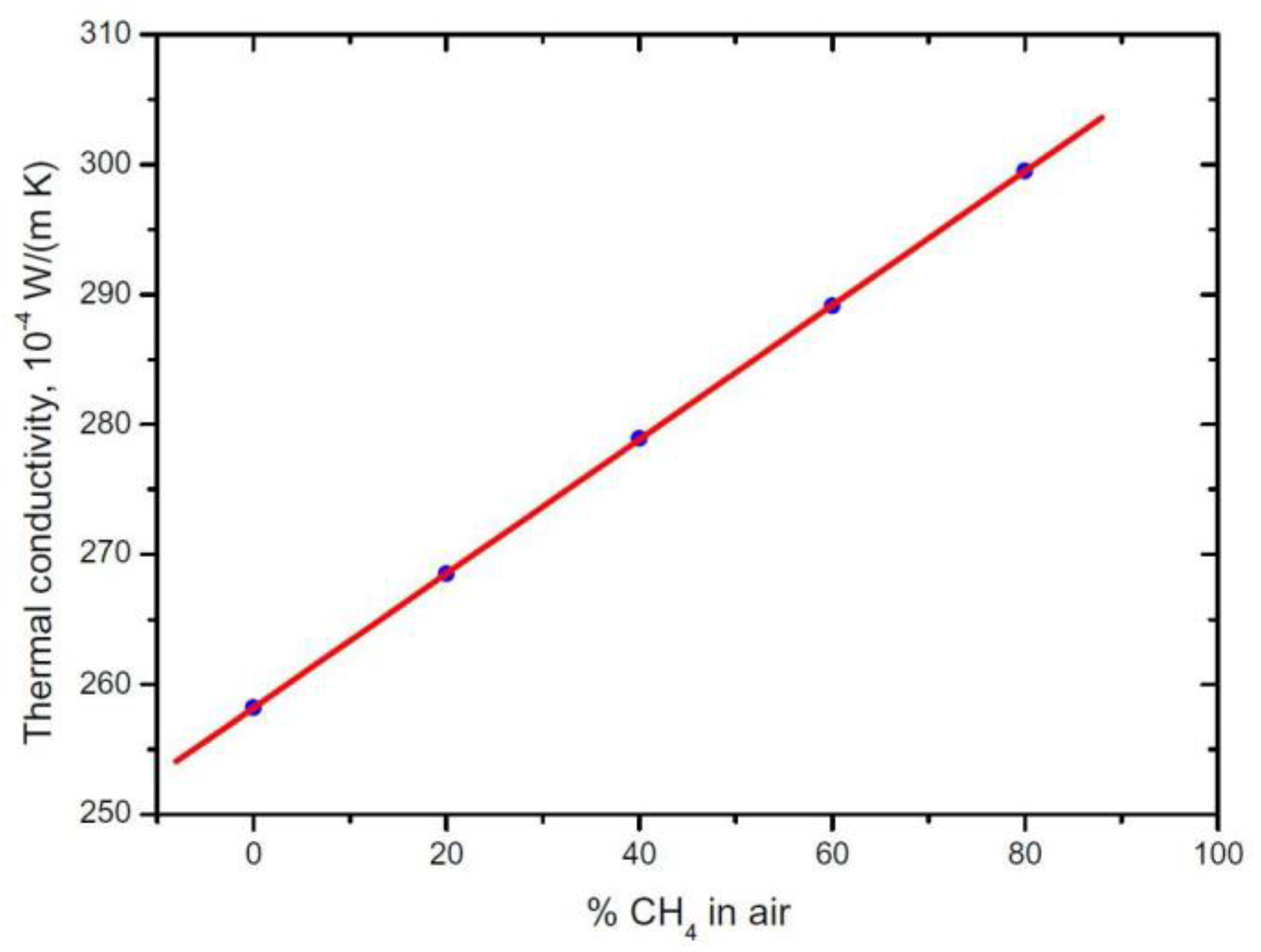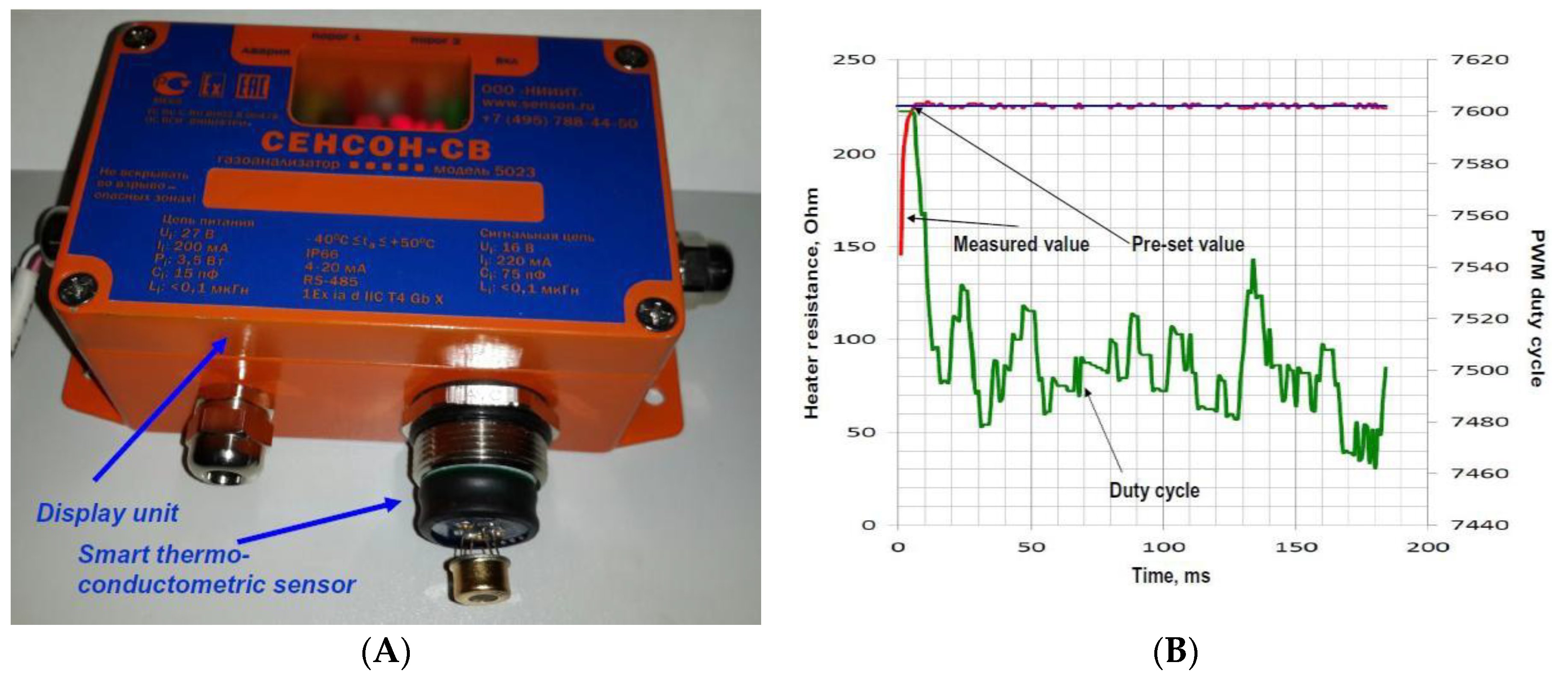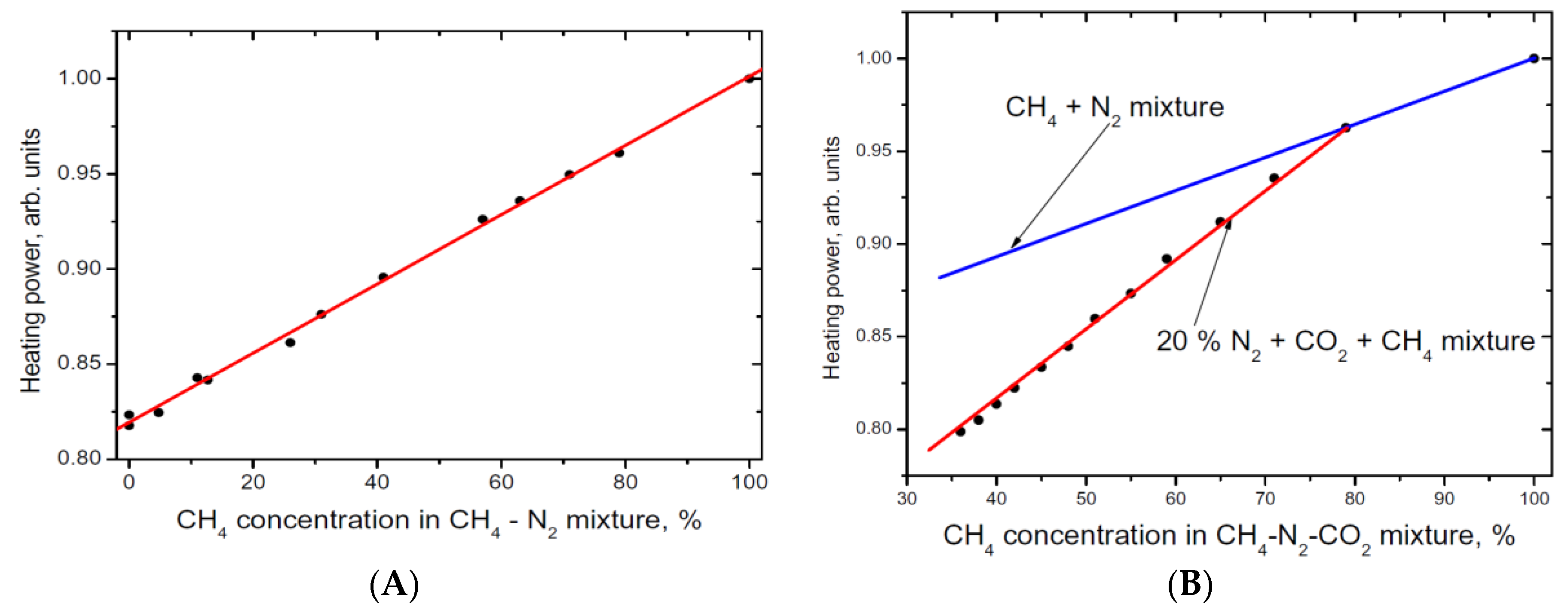Intellectual Thermoconductometric Unit Based on Aerosol Printed Ceramic MEMS Sensor for the Measurement of Natural Gas Composition †
Abstract
:1. Introduction
2. Experiment
3. Results and Discussion
4. Conclusions
Author Contributions
Acknowledgments
Conflicts of Interest
References
- Vargaftik, N.B. Handbook on Thermophysical Properties of Gases and Liquids; Nauka: Moscow, Russia, 1972. [Google Scholar]




Publisher’s Note: MDPI stays neutral with regard to jurisdictional claims in published maps and institutional affiliations. |
© 2018 by the authors. Licensee MDPI, Basel, Switzerland. This article is an open access article distributed under the terms and conditions of the Creative Commons Attribution (CC BY) license (https://creativecommons.org/licenses/by/4.0/).
Share and Cite
Vasiliev, A.; Shakhnovich, I.; Samotaev, N.; Anisimov, D.; Dziuban, J.; Knapkiewicz, P. Intellectual Thermoconductometric Unit Based on Aerosol Printed Ceramic MEMS Sensor for the Measurement of Natural Gas Composition. Proceedings 2018, 2, 736. https://doi.org/10.3390/proceedings2130736
Vasiliev A, Shakhnovich I, Samotaev N, Anisimov D, Dziuban J, Knapkiewicz P. Intellectual Thermoconductometric Unit Based on Aerosol Printed Ceramic MEMS Sensor for the Measurement of Natural Gas Composition. Proceedings. 2018; 2(13):736. https://doi.org/10.3390/proceedings2130736
Chicago/Turabian StyleVasiliev, Alexey, Ilia Shakhnovich, Nikolay Samotaev, Daniil Anisimov, Jan Dziuban, and Pawel Knapkiewicz. 2018. "Intellectual Thermoconductometric Unit Based on Aerosol Printed Ceramic MEMS Sensor for the Measurement of Natural Gas Composition" Proceedings 2, no. 13: 736. https://doi.org/10.3390/proceedings2130736
APA StyleVasiliev, A., Shakhnovich, I., Samotaev, N., Anisimov, D., Dziuban, J., & Knapkiewicz, P. (2018). Intellectual Thermoconductometric Unit Based on Aerosol Printed Ceramic MEMS Sensor for the Measurement of Natural Gas Composition. Proceedings, 2(13), 736. https://doi.org/10.3390/proceedings2130736




